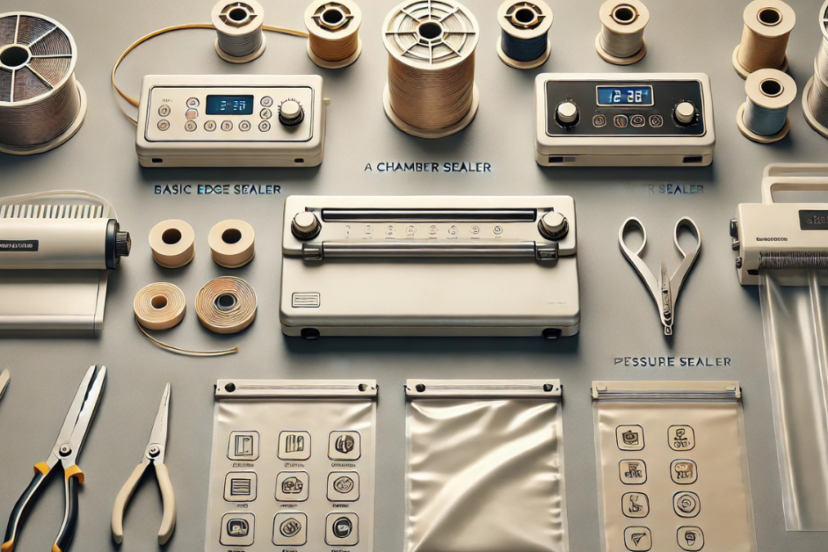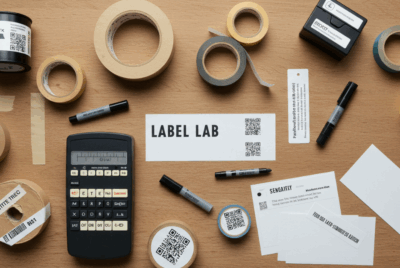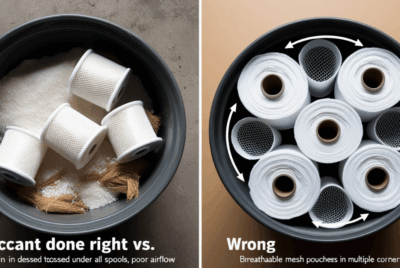How Do You Choose the Right Vacuum Sealer for Storing Filament?
Choosing the right vacuum sealer for storing 3D filament is crucial to ensure that the filament remains protected from moisture and contaminants over time. Not all vacuum sealers are created equal, and selecting the best one for your needs can make a significant difference in the quality and longevity of your filament. Here are key factors to consider when choosing the right vacuum sealer for filament storage:
1. Sealing Power and Pressure
- What It Means: The strength of the vacuum sealer’s vacuum pressure determines how well it can remove air from the storage bag and create an airtight seal. A more powerful vacuum sealer ensures that your filament is kept in a moisture-free environment.
- Why It Matters for Filament Storage: For filament storage, it’s essential to create a strong vacuum to ensure that all the air and moisture are removed. A weak seal may not fully protect your filament.
- What to Look For: Look for a vacuum sealer that offers a high vacuum pressure, typically in the range of 80-90% vacuum, to remove as much air as possible. Adjustable pressure settings are also beneficial for fine-tuning the vacuum depending on the type of material you are sealing.
- Recommendation: Chamber vacuum sealers generally offer stronger, more consistent pressure and are ideal for sealing larger or more delicate items like filament spools.
2. Bag Compatibility
- What It Means: Not all vacuum sealers are compatible with all types of vacuum-sealing bags. Filament storage requires the use of strong, high-quality vacuum bags that can withstand long-term storage without tearing or allowing air to leak in.
- Why It Matters for Filament Storage: For proper filament storage, you need to ensure that the bags you use are moisture-proof and have good durability to withstand sealing multiple times without breaking.
- What to Look For: Ensure that the vacuum sealer is compatible with thicker bags, as some cheap vacuum bags may not provide an airtight seal. Heavy-duty, multi-layer vacuum bags are the best choice for storing filament. Many sealers come with bag roll options so you can cut the bags to the desired size.
- Recommendation: Choose a vacuum sealer that offers compatibility with both pre-made vacuum bags and vacuum bag rolls so you can tailor the bag size to your needs.
3. Sealing Width
- What It Means: The sealing width refers to the length of the sealing bar where the bag is sealed. A wider sealing bar ensures a more secure seal, which is important for long-term storage of filament.
- Why It Matters for Filament Storage: A wider seal means the vacuum sealer can create a stronger seal on the bag, ensuring that the filament remains protected from air and moisture. This is particularly important when storing large filament spools that require a larger bag.
- What to Look For: A vacuum sealer with a sealing width of at least 12 inches is ideal for filament storage, as it will accommodate larger filament spools. A wider seal also reduces the risk of air entering the bag, keeping the filament safe from moisture.
- Recommendation: If you frequently store large spools of filament, opt for a vacuum sealer with a 12-inch or wider sealing width to handle bigger bags.
4. Ease of Use
- What It Means: A vacuum sealer should be easy to use, especially if you’re sealing bags frequently. It should have simple controls and a quick setup process.
- Why It Matters for Filament Storage: If the vacuum sealer is complicated to operate, it may discourage you from using it regularly. Filament storage requires frequent use, especially if you have multiple spools that need to be resealed.
- What to Look For: Look for a vacuum sealer with user-friendly controls, ideally with one-touch operation for quick sealing. Features like automatic sealing can simplify the process, while manual control may offer more flexibility for sealing delicate items like filament.
- Recommendation: Choose a vacuum sealer with an automatic mode and easy-to-clean components, such as removable drip trays or washable parts.
5. Durability and Build Quality
- What It Means: The durability and build quality of the vacuum sealer are important, especially for regular use in sealing filament bags.
- Why It Matters for Filament Storage: A vacuum sealer that is built to last will provide more consistent performance and ensure that it can handle the workload of frequent sealing without breaking down.
- What to Look For: Look for vacuum sealers made from sturdy, high-quality materials, such as stainless steel or durable plastic, which can withstand repeated use.
- Recommendation: Choose a commercial-grade vacuum sealer if you plan to use it frequently or for long-term storage of multiple filament spools. Heavy-duty models are built for reliability.
6. Bag Storage and Cutter
- What It Means: Some vacuum sealers come with integrated bag storage and cutters, making it easier to store and customize your bags as needed.
- Why It Matters for Filament Storage: For easy, efficient sealing, it’s helpful to have built-in tools that allow you to cut bags to the correct size without using scissors.
- What to Look For: Choose a vacuum sealer with a bag cutter that lets you cut the vacuum bag to the right size, so you don’t waste extra material. Bag storage compartments help you keep everything organized.
- Recommendation: If you’re sealing multiple bags for different filament types, a sealer with built-in bag storage and a cutter will save time and effort.
7. Cost and Budget
- What It Means: Vacuum sealers come in a wide range of prices, from basic models to commercial-grade ones.
- Why It Matters for Filament Storage: If you’re only sealing a few bags occasionally, a budget-friendly model may be sufficient. However, for regular use with large filament spools, it might be worth investing in a higher-end model that offers more features and durability.
- What to Look For: Consider how often you plan to use the vacuum sealer and how much you are willing to spend. Higher-end models generally offer more power, sealing width, and durability, but a budget model may suffice for light use.
- Recommendation: If you’re sealing filament regularly, consider spending a bit more on a mid-range or commercial-grade sealer to ensure that it can handle your needs for long-term storage.
8. Multi-Function Features
- What It Means: Some vacuum sealers offer multi-function features, such as marinating, canning, and external vacuuming, in addition to sealing bags.
- Why It Matters for Filament Storage: These extra functions may not be necessary for filament storage, but they can add versatility to your vacuum sealer if you use it for other purposes, such as storing food or household items.
- What to Look For: Choose a vacuum sealer that is dedicated to filament storage unless you plan to use it for other tasks. Avoid overly complex models if you only need it for vacuum-sealing filament bags.
- Recommendation: A simple vacuum sealer with the specific features needed for sealing filament will be more effective and cost-efficient than a multi-purpose model.
Summary of Factors to Consider When Choosing a Vacuum Sealer for Filament Storage:
- Sealing Power and Pressure: Ensure strong vacuum pressure for moisture protection.
- Bag Compatibility: Choose a sealer compatible with high-quality, moisture-proof bags.
- Sealing Width: Opt for a vacuum sealer with a 12-inch or wider sealing bar for larger spools.
- Ease of Use: Look for simple controls and automatic sealing functions for quick and easy use.
- Durability and Build Quality: Choose a sturdy vacuum sealer for reliable long-term use.
- Bag Storage and Cutter: Consider a sealer with bag storage and a cutter for convenience.
- Cost and Budget: Determine whether a budget model suffices or if you need a commercial-grade unit for heavy use.
- Multi-Function Features: For dedicated filament storage, avoid unnecessary multi-purpose functions.
Conclusion:
To choose the best vacuum sealer for storing filament, prioritize a strong vacuum pressure, compatibility with durable bags, and a wide sealing width for large spools. Ease of use, durability, and cost are also important factors, depending on how often you plan to reseal filament bags. By considering these factors, you can ensure that your filament remains dry and in optimal condition for printing.




